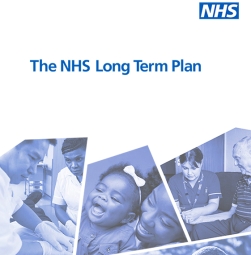In our previous intro blog we talked about a recent Cochrane systematic review on the use of patient-initiated appointment systems for managing the care of people with chronic or recurring conditions in secondary care.
This is the fifth of a series of blogs looking at PIAS from different perspectives. Each blog will provide a different perspective from that of a service user (patient), a clinical nurse specialist, a consultant, a service manager to that of a health service commissioner. These blogs aim to stimulate the conversation around the future of high quality and sustainable care management for those with long term, recurrent or chronic (and perhaps multiple) conditions.
The health commissioner perspective
So who are you and what do you do?
My name is Fiona Peck and I have been in a commissioner role since March 2000. My whole working life has been within various NHS organisations so I am an avid supporter of the NHS ethos.
What is your involvement with Patient-initiated appointment systems (PIAS)?
Most latterly my role is Head of Planned Care in NHS Devon CCG. In this role, I am aware of the NHS Long Term Plan which states:
‘GP practices and hospital outpatients currently provide around 400 million face-to-face appointments each year. Over the next five years, every patient will have the right to online ‘digital’ GP consultations, and redesigned hospital support will be able to avoid up to a third of outpatient appointments – saving patients 30 million trips to hospital, and saving the NHS over £1 billion a year in new expenditure averted’
Outpatient Services need a complete overhaul in order to meet this challenge. I also see national data which indicates that the Devon system compares poorly in terms of outpatient productivity and therefore there is potential gain both for the service and for patients. NHS Devon’s Commissioning Intentions are to achieve upper quartile performance. Patient-initiated appointment systems (PIAS) is one recognised way that this can be achieved.
How has PIAS affected you?
I have personal experience as well as a professional view of PIAS appointments – a few years ago my mother was diagnosed with a neurological condition. When she was first diagnosed, and whilst the consultant tried to stabilise her, she needed frequent visits to the outpatient department. Unfortunately the appointments offered did not always coincide with flare ups in her condition, so that at times we attended the outpatient department when there was little to discuss and at other times we would ring and be fitted in to see the consultant at short notice. The hospital was excellent at seeing her in a timely fashion at these times of need and it became obvious that the structured follow up regime was not working. Patient consultation and engagement undertaken by the Devon system supports the view that the outpatient service is in need of an overhaul.
What do you see as the main advantages of the PIAS approach?

As a commissioner, the more that I have come to learn about PIAS, the more convinced I am that this is the way of the future in a great many specialties. The National data shows that the areas with better outpatient performance are the early adopters of PIAS with patients able to attend to seek medical advice when it fits with their personal circumstances. This also frees up outpatient appoint times so that timely support and advice is available when it is needed, reducing potential harm for patients. Attendance at an Outpatient appointment can be a cause of anxiety and stress – in my particular circumstance it meant taking time off work to collect my mother and accompany her to the appointment.
What do you feel needs further development or consideration?
Medical conditions are not predictable and will not necessarily fit in with a scheduled follow up regime. With increasing demand for services, the outpatient model needs to be modernised and there is evidence that the current model of time-determined follow up frequency does not work in many circumstances and is not the most effective use of a limited resource.
What would be your top tips for those considering using a PIAS approach?
There are a number of prerequisites to the success of PIAS and it certainly will not work for every patient – the Patient Activation Measure used alongside PIAS can be a beneficial tool. Patient Activation Measure (PAM) is a short survey that categorises patients in to one of four bands according to the knowledge, skills and confidence a person has in managing their own health and care – this patient stratification helps to tailor the approach to specific patient groups. This will identify which patients are most able and appropriate for PIAS.
What have you learned from you experience of PIAS and what advice would you give to someone considering starting one?
For many conditions, the patient is best able to determine the point at which a PIAS is required, but for other conditions this can be supported digitally to monitor a patient’s condition with appropriate triggers and thresholds to support the process. The booking of outpatient slots needs to be set up in such a way that those patients who require a PIAS have timely access but also ensure that the outpatient clinic is optimised. It will be necessary to have some ‘safety nets’ to ensure that patients do not go unsupported with their condition, particularly in those conditions where it is not entirely obvious to the individual that further treatment may be required.
With many thanks to Fiona for agreeing to share her experience (and her photo!).
We hope you have enjoyed this blog series.
Previous blogs in this series: Introduction, The Service User, The Clinical Nurse Specialist, The Consultant, The Service Manager.
You can also listen to two of the authors discuss the Cochrane systematic review that underpins this work on this podcast.



1 Pingback